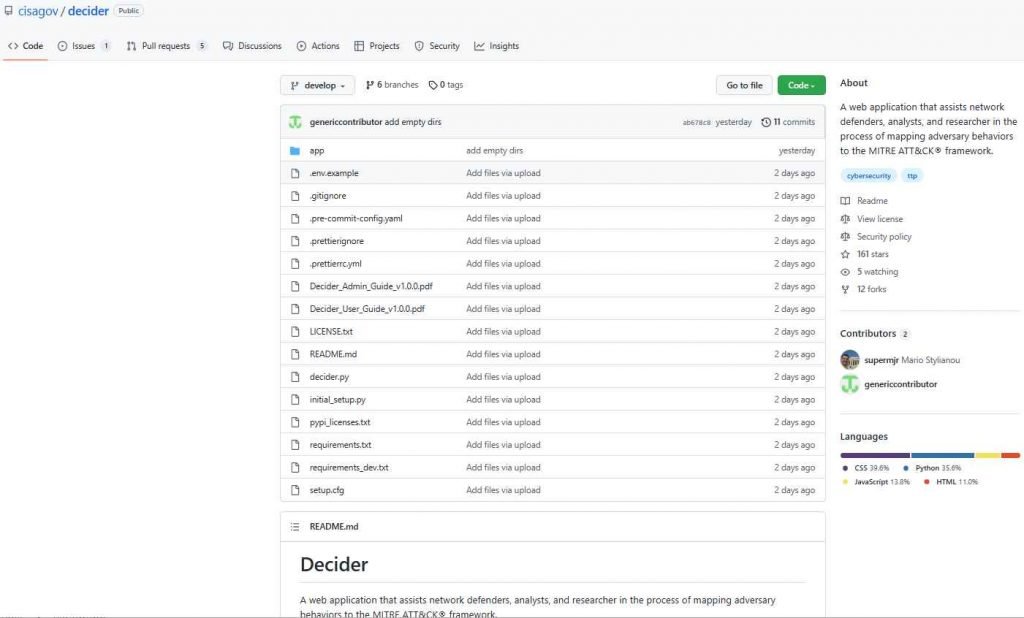Open-source tools represent a dynamic force in the technological landscape, embodying innovation, collaboration, and accessibility. These tools, developed with transparency and community-driven principles, allow users to scrutinize, modify, and adapt solutions according to their unique needs.
In cybersecurity, open-source tools are invaluable assets, empowering organizations to fortify their defenses against evolving threats.
In this article, you will find a list of open-source cybersecurity tools that you should definitely check out.
Nemesis: Open-source offensive data enrichment and analytic pipeline
Nemesis is a centralized data processing platform that ingests, enriches, and performs analytics on offensive security assessment data (i.e., data collected during penetration tests and red team engagements).

SessionProbe: Open-source multi-threaded pentesting tool
SessionProbe is a multi-threaded pentesting tool designed to evaluate user privileges in web applications.

Mosint: Open-source automated email OSINT tool
Mosint is an automated email OSINT tool written in Go designed to facilitate quick and efficient investigations of target emails. It integrates multiple services, providing security researchers with rapid access to a broad range of information.

Vigil: Open-source LLM security scanner
Vigil is an open-source security scanner that detects prompt injections, jailbreaks, and other potential threats to Large Language Models (LLMs).

AWS Kill Switch: Open-source incident response tool
AWS Kill Switch is an open-source incident response tool for quickly locking down AWS accounts and IAM roles during a security incident.

PolarDNS: Open-source DNS server tailored for security evaluations
PolarDNS is a specialized authoritative DNS server that allows the operator to produce custom DNS responses suitable for DNS protocol testing purposes.

k0smotron: Open-source Kubernetes cluster management
Open-source solution k0smotron is enterprise-ready for production-grade Kubernetes cluster management with two support options.

Kubescape 3.0 elevates open-source Kubernetes security
Targeted at the DevSecOps practitioner or platform engineer, Kubescape, the open-source Kubernetes security platform has reached version 3.0.

Logging Made Easy: Free log management solution from CISA
CISA launched a new version of Logging Made Easy (LME), a straightforward log management solution for Windows-based devices that can be downloaded and self-installed for free.

GOAD: Vulnerable Active Directory environment for practicing attack techniques
Game of Active Directory (GOAD) is a free pentesting lab. It provides a vulnerable Active Directory environment for pen testers to practice common attack methods.

Wazuh: Free and open-source XDR and SIEM
Wazuh is an open-source platform designed for threat detection, prevention, and response. It can safeguard workloads in on-premises, virtual, container, and cloud settings.

Yeti: Open, distributed, threat intelligence repository
Yeti serves as a unified platform to consolidate observables, indicators of compromise, TTPs, and threat-related knowledge. It enhances observables automatically, such as domain resolution and IP geolocation, saving you the effort.

BinDiff: Open-source comparison tool for binary files
BinDiff is a binary file comparison tool to find differences and similarities in disassembled code quickly.

LLM Guard: Open-source toolkit for securing Large Language Models
LLM Guard is a toolkit designed to fortify the security of Large Language Models (LLMs). It is designed for easy integration and deployment in production environments.

Velociraptor: Open-source digital forensics and incident response
Velociraptor is a sophisticated digital forensics and incident response tool designed to improve your insight into endpoint activities.

Open Source Intelligence Methods and Tools: A Practical Guide to Online Intelligence
InfoSec tools | InfoSec services | InfoSec books | Follow our blog | DISC llc is listed on The vCISO Directory





